Abstract
Experiments with pigeons and rats showed that: (1) When a brief blackout was presented in lieu of reinforcement at the end of 25% of intervals on a fixed-interval 2-min schedule, response rate was reliably and persistently higher during the following 2-min intervals (omission effect). This effect was largely due to a decrease in time to first response after reinforcement omission. (2) When blackout duration was varied, within sessions, over the range 2 to 32 sec, time to first response was inversely related to the duration of the preceding blackout, for pigeons, and for rats during the first few sessions after the transition from FI 2-min to FI 2-min with reinforcement omission. Post-blackout pause was independent of blackout duration for rats at asymptote. These results were interpreted in terms of differential depressive effects of reinforcement and blackout on subsequent responding.
Full text
PDF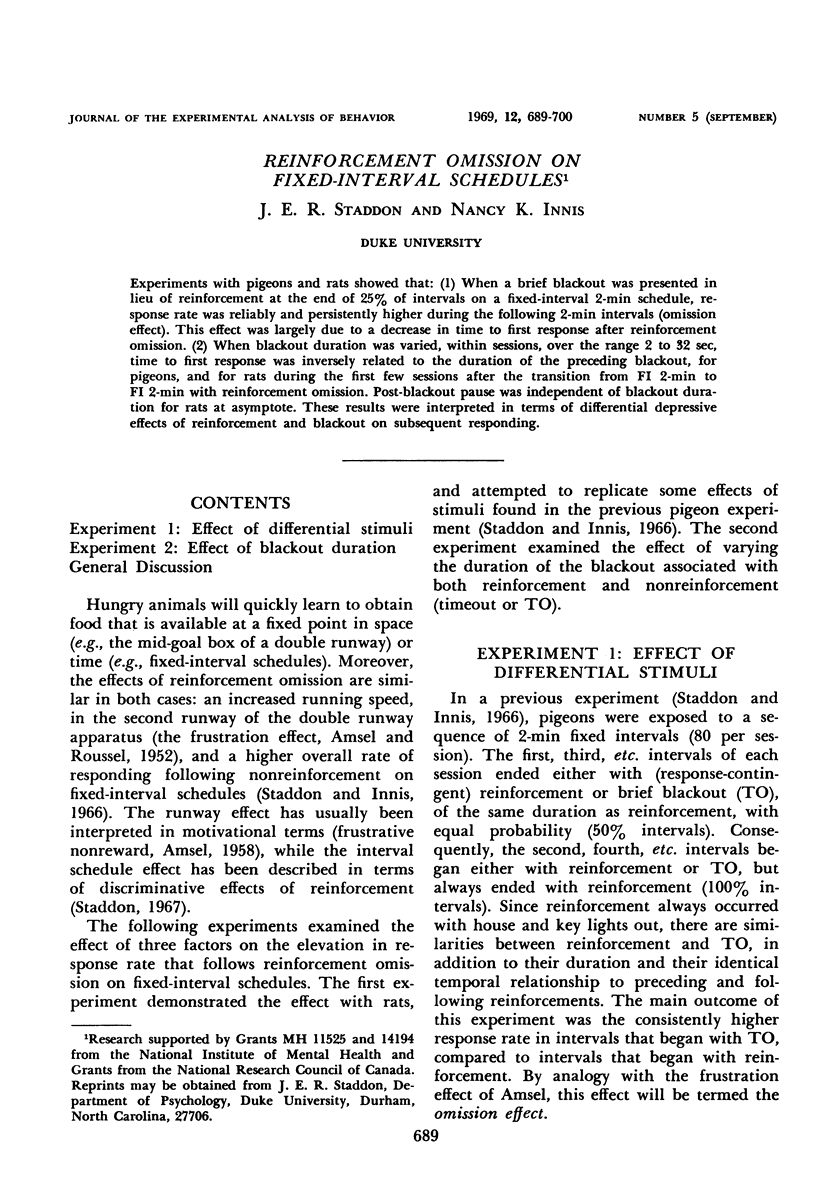
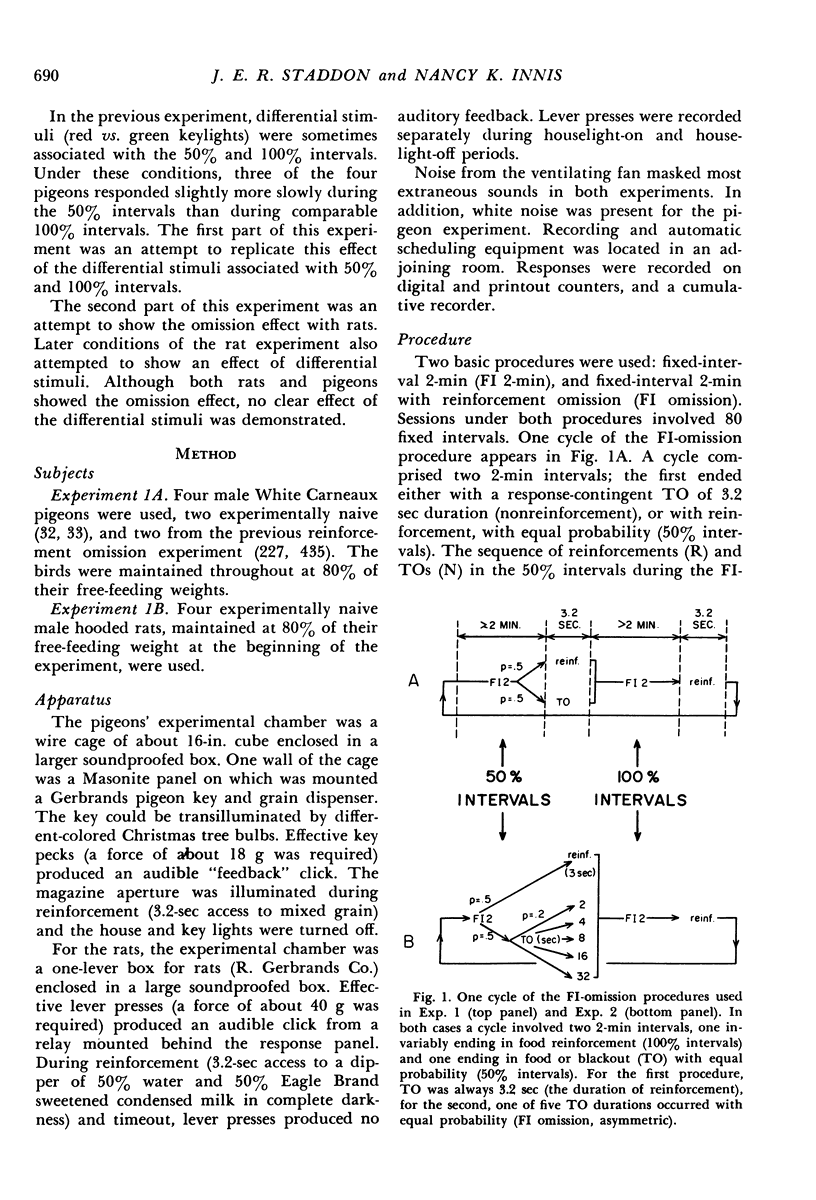
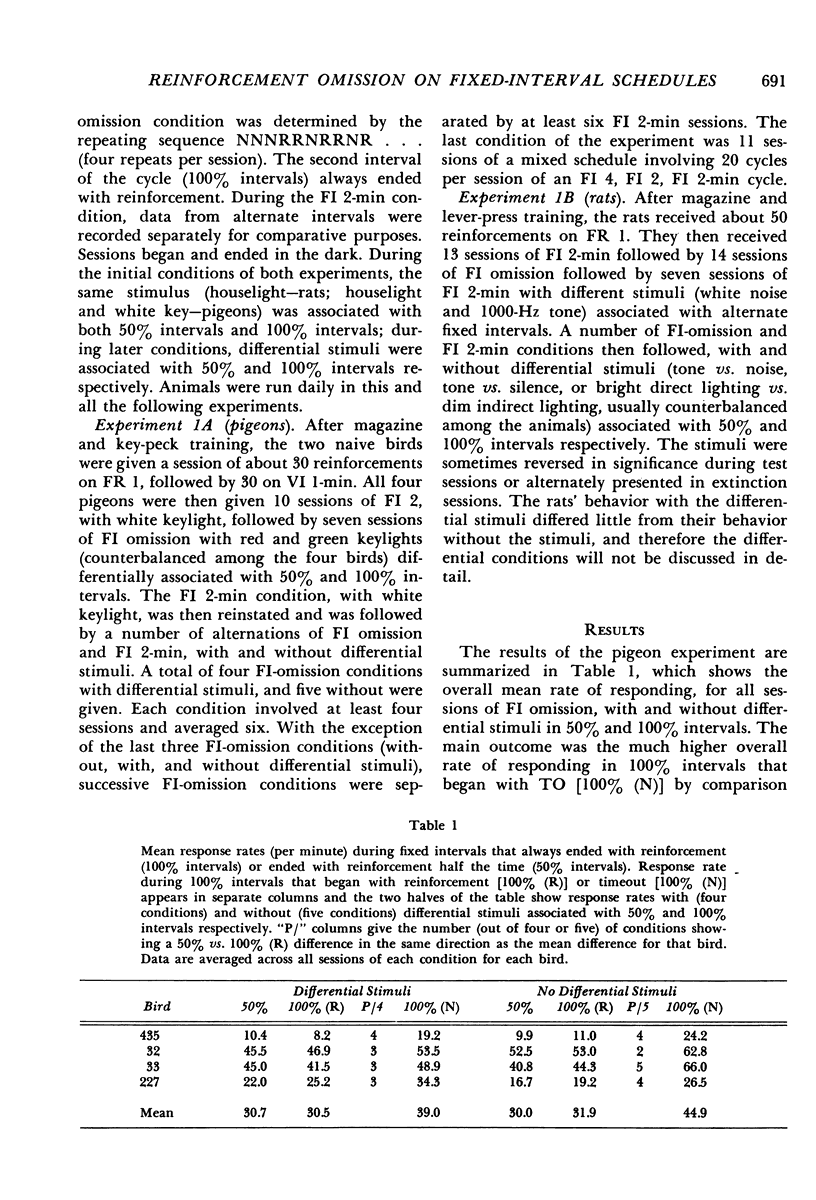
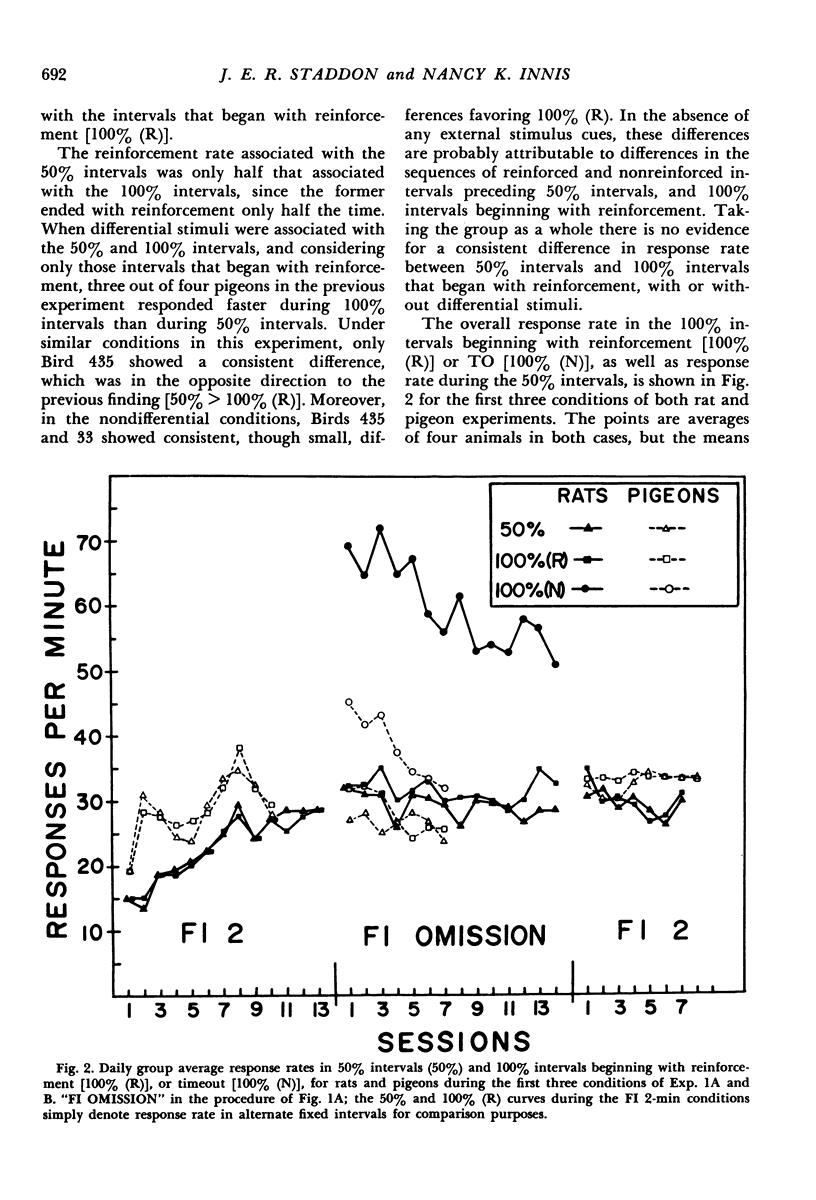
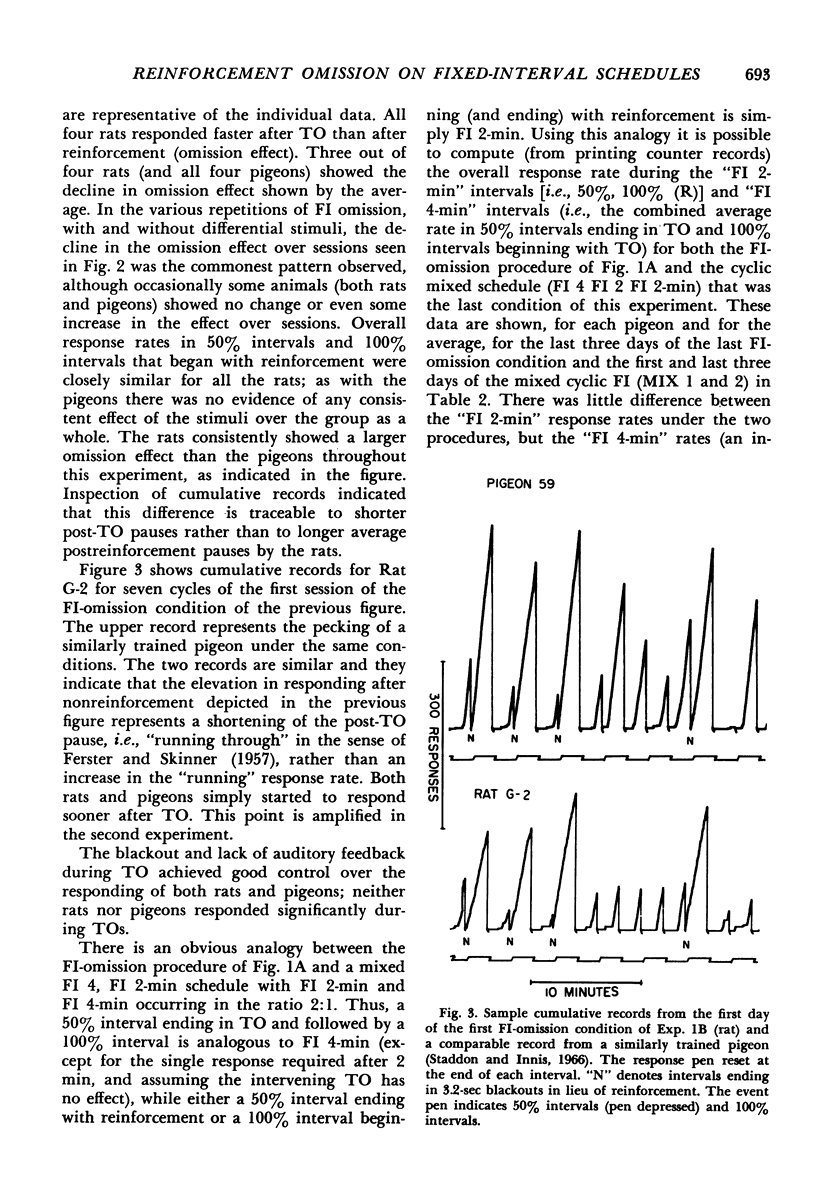
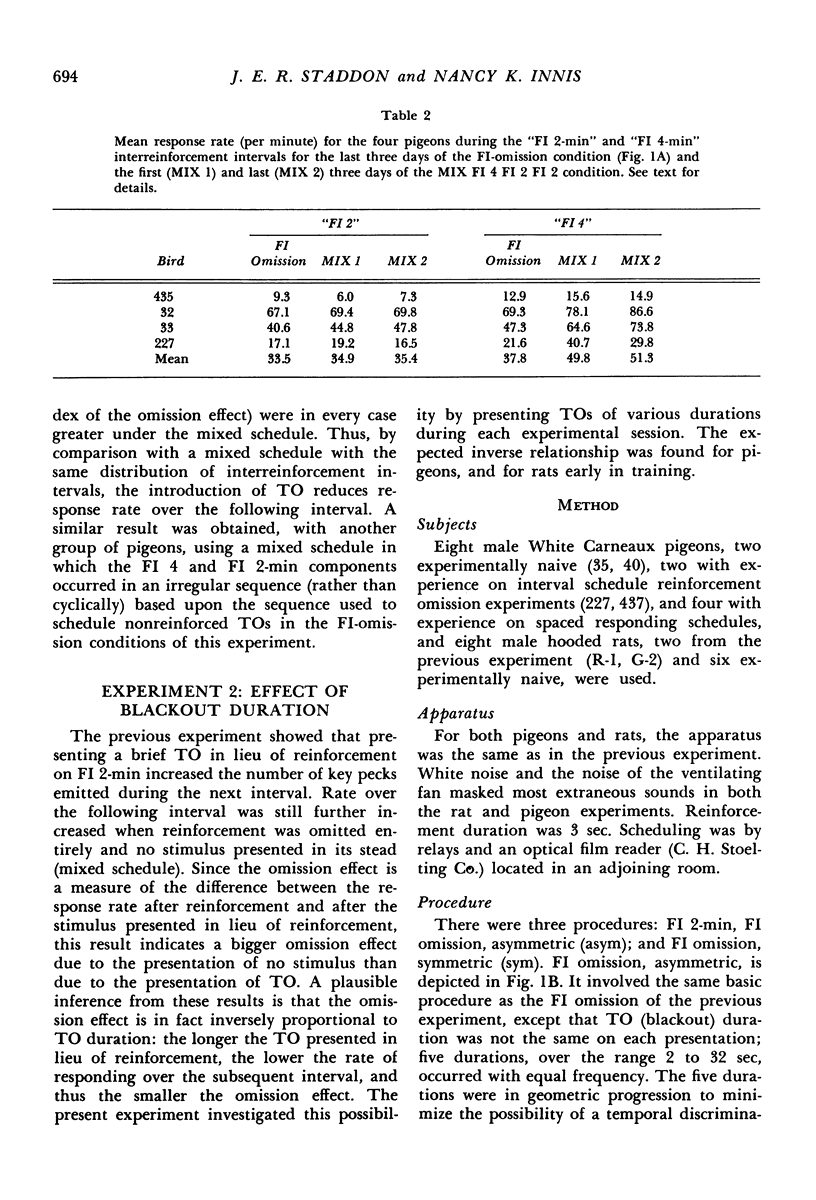
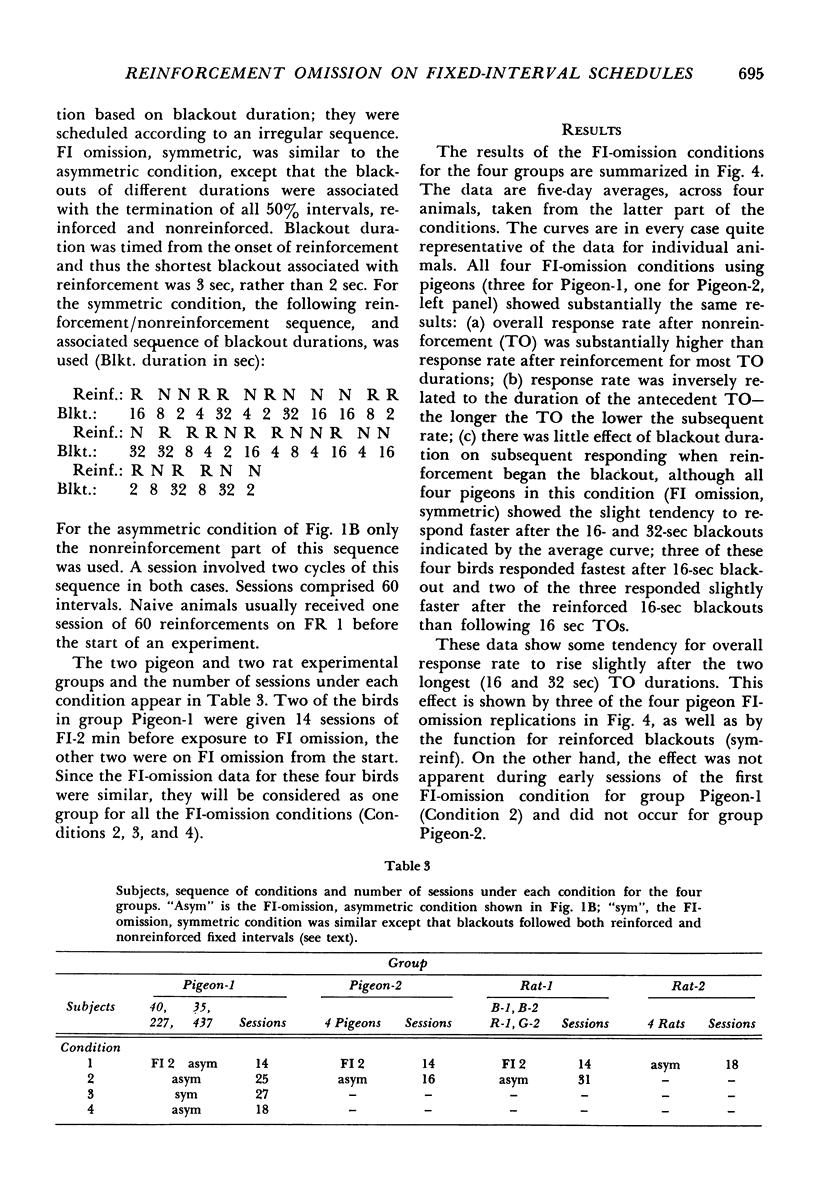
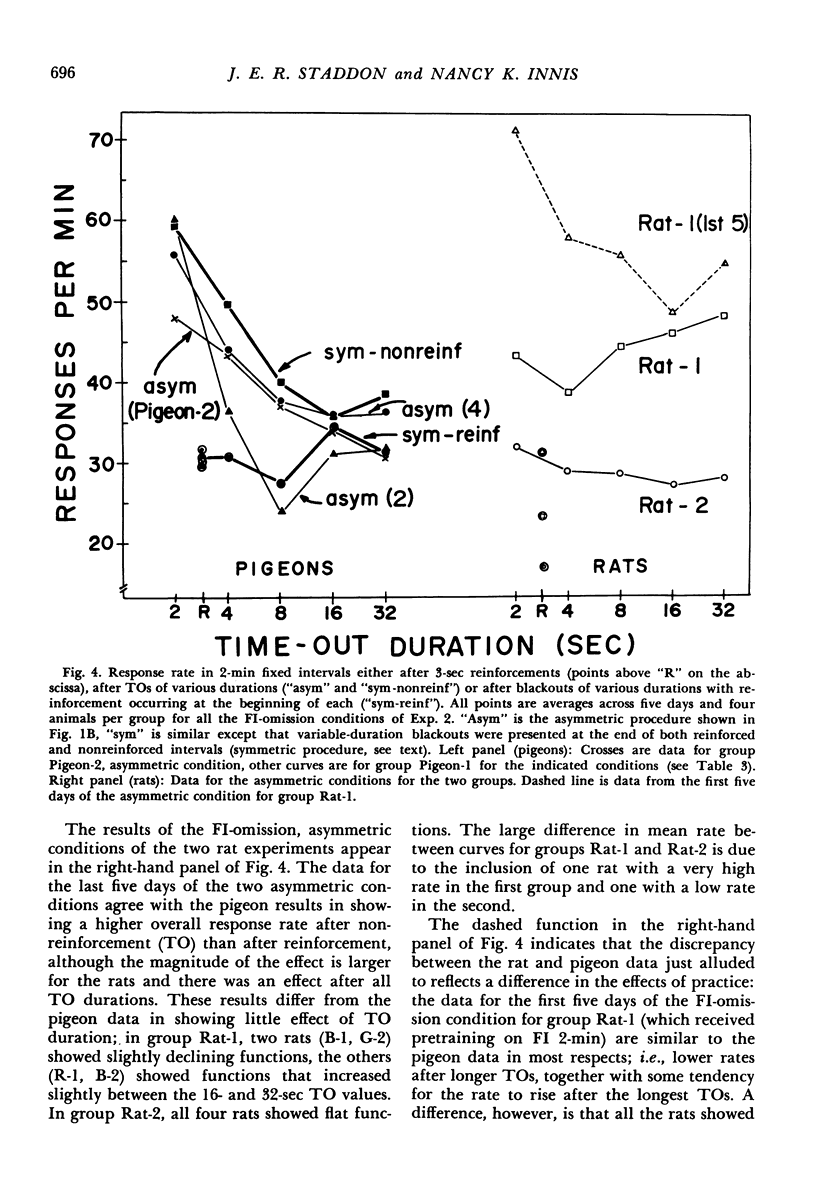
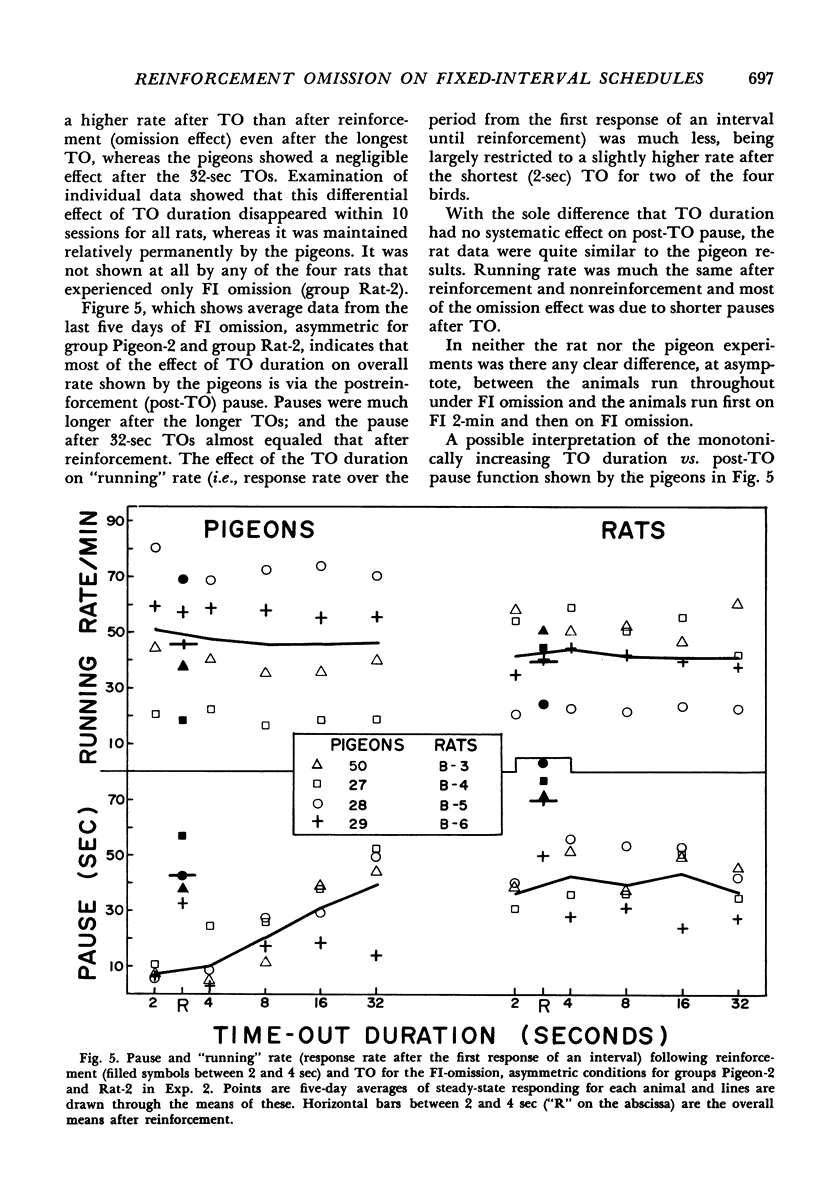
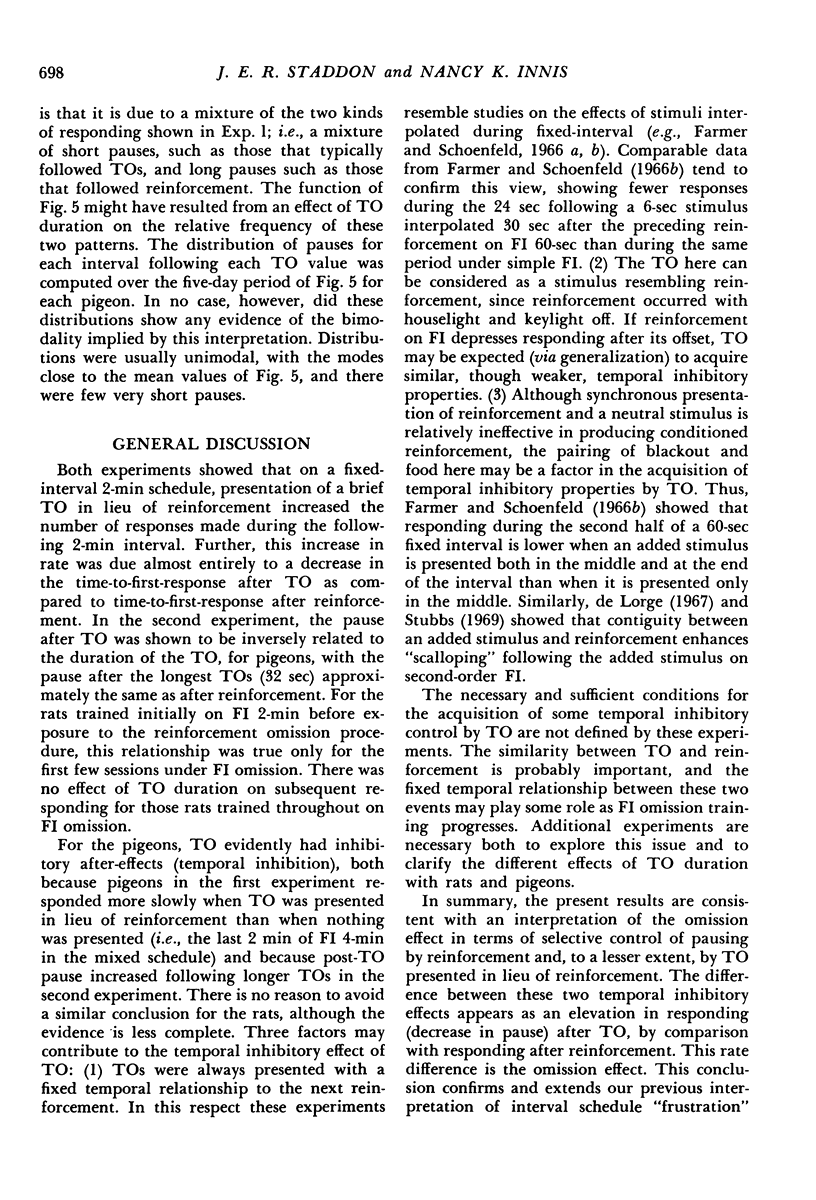
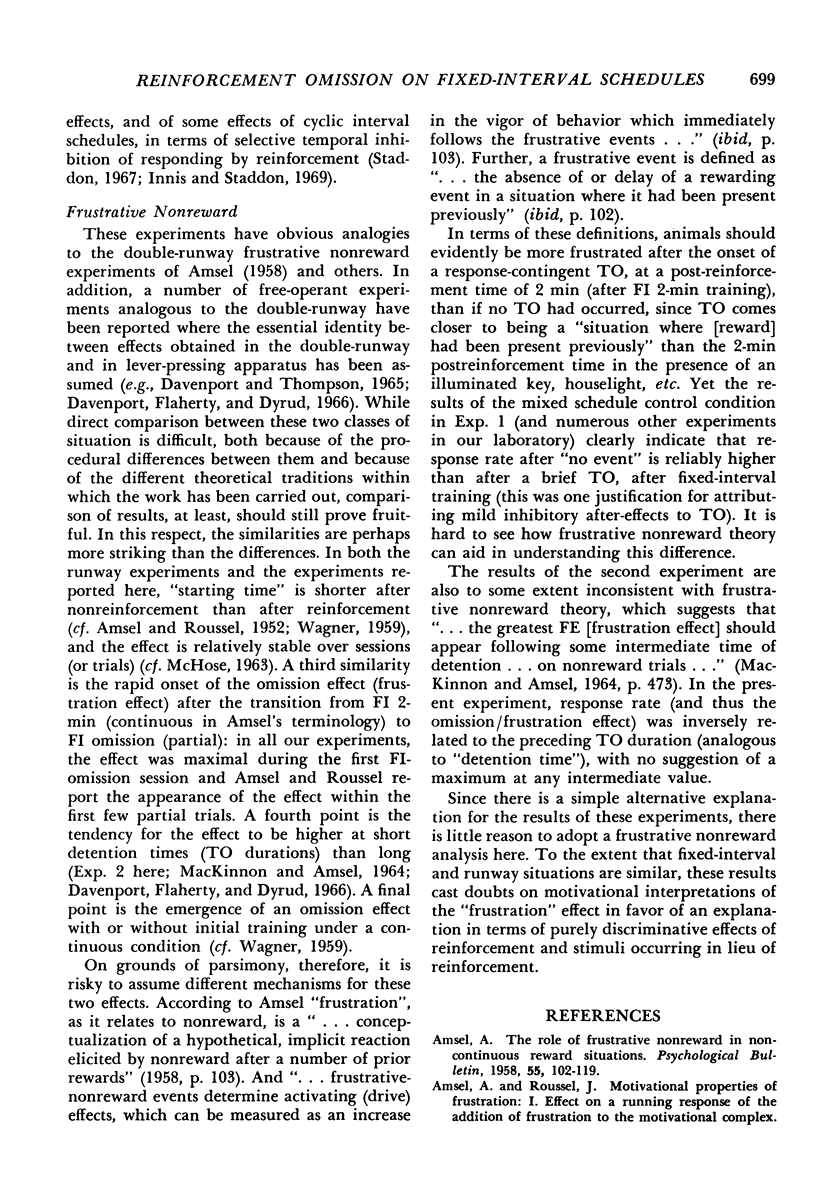
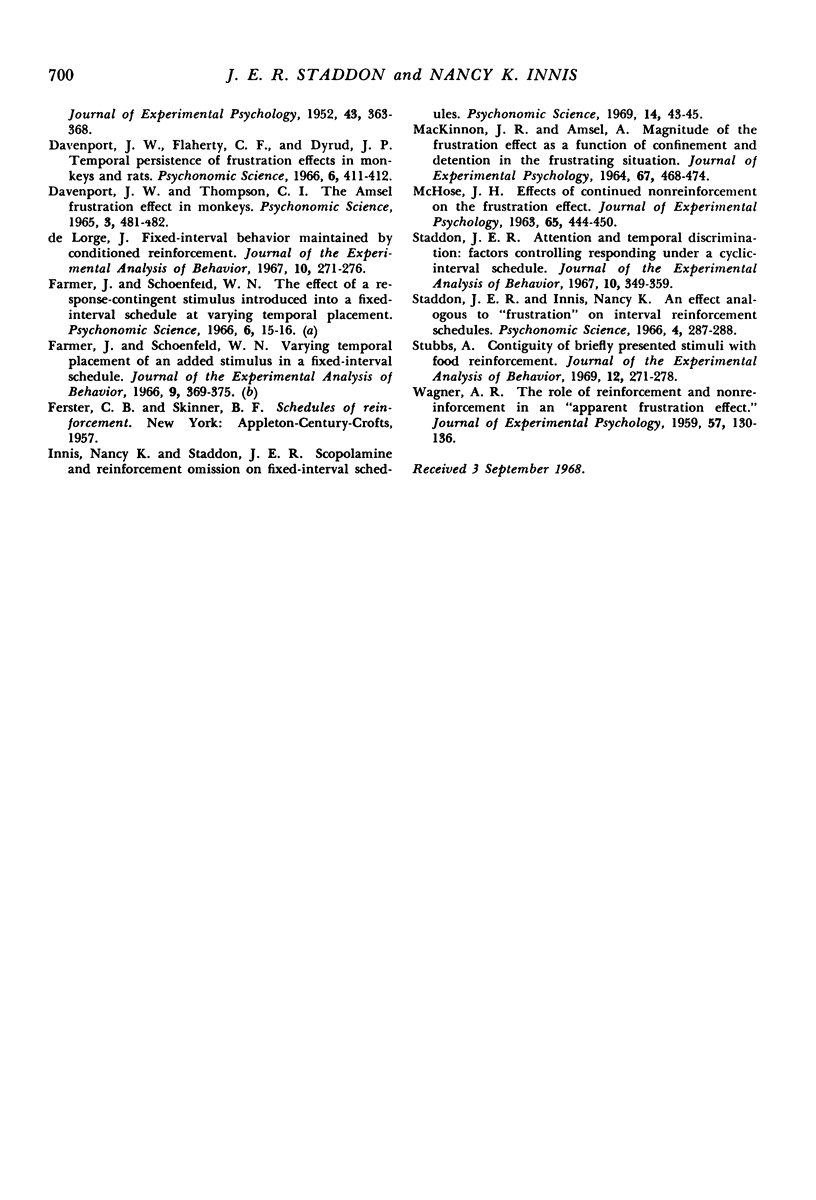
Selected References
These references are in PubMed. This may not be the complete list of references from this article.
- AMSEL A., ROUSSEL J. Motivational properties of frustration. I. Effect on a running response of the addition of frustration to the motivational complex. J Exp Psychol. 1952 May;43(5):363–366. doi: 10.1037/h0059393. [DOI] [PubMed] [Google Scholar]
- AMSEL A. The role of frustrative nonreward in noncontinuous reward situations. Psychol Bull. 1958 Mar;55(2):102–119. doi: 10.1037/h0043125. [DOI] [PubMed] [Google Scholar]
- De Lorge J. Fixed-interval behavior maintained by conditioned reinforcement. J Exp Anal Behav. 1967 May;10(3):271–276. doi: 10.1901/jeab.1967.10-271. [DOI] [PMC free article] [PubMed] [Google Scholar]
- Farmer J., Schoenfeld W. N. Varying temporal placement of an added stimulus in a fixed-interval schedule. J Exp Anal Behav. 1966 Jul;9(4):369–375. doi: 10.1901/jeab.1966.9-369. [DOI] [PMC free article] [PubMed] [Google Scholar]
- MACKINNON J. R., AMSEL A. MAGNITUDE OF THE FRUSTRATION EFFECT AS A FUNCTION OF CONFINEMENT AND DETENTION IN THE FRUSTRATING SITUATION. J Exp Psychol. 1964 May;67:468–474. doi: 10.1037/h0046443. [DOI] [PubMed] [Google Scholar]
- Staddon J. E. Attention and temporal discrimination: factors controlling responding under a cyclic-interval schedule. J Exp Anal Behav. 1967 Jul;10(4):349–359. doi: 10.1901/jeab.1967.10-349. [DOI] [PMC free article] [PubMed] [Google Scholar]
- Stubbs A. Contiguity of briefly presented stimuli with food reinforcement. J Exp Anal Behav. 1969 Mar;12(2):271–278. doi: 10.1901/jeab.1969.12-271. [DOI] [PMC free article] [PubMed] [Google Scholar]
- WAGNER A. R. The role of reinforcement and nonreinforcement in an apparent frustration effect. J Exp Psychol. 1959 Feb;57(2):130–136. doi: 10.1037/h0047041. [DOI] [PubMed] [Google Scholar]


